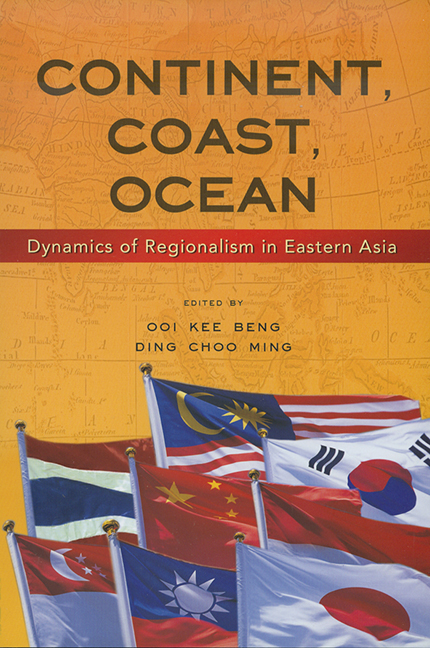Book contents
- Frontmatter
- Contents
- Foreword by Shamsul A.B.
- Contributors
- Introduction
- PART ONE PUTTING JAPANESE IMPERIAL HISTORY TO REST
- PART TWO THE ECONOMICS OF REGIONAL INTEGRATION
- PART THREE INTER-REGIONALISM AND REGIONALISM
- 5 Alliance and Arms: A Study of the Change in U.S. Arms Transfer to East Asian Allies, 1950–2001
- 6 A Multicultural European Union and Its Implications for Asia
- 7 The Future Prospects of Multilateralism in Southeast and East Asia
- 8 The Historical and Cultural Legacy of Relations between Southeast Asia and East Asia, with Special Reference to Malaysia
- PART FOUR NEW KNOWLEDGE, NEW PROBLEMS, NEW SOLUTIONS
- Index
7 - The Future Prospects of Multilateralism in Southeast and East Asia
from PART THREE - INTER-REGIONALISM AND REGIONALISM
Published online by Cambridge University Press: 21 October 2015
- Frontmatter
- Contents
- Foreword by Shamsul A.B.
- Contributors
- Introduction
- PART ONE PUTTING JAPANESE IMPERIAL HISTORY TO REST
- PART TWO THE ECONOMICS OF REGIONAL INTEGRATION
- PART THREE INTER-REGIONALISM AND REGIONALISM
- 5 Alliance and Arms: A Study of the Change in U.S. Arms Transfer to East Asian Allies, 1950–2001
- 6 A Multicultural European Union and Its Implications for Asia
- 7 The Future Prospects of Multilateralism in Southeast and East Asia
- 8 The Historical and Cultural Legacy of Relations between Southeast Asia and East Asia, with Special Reference to Malaysia
- PART FOUR NEW KNOWLEDGE, NEW PROBLEMS, NEW SOLUTIONS
- Index
Summary
Multilateralism, both as an approach and policy position, falls within the liberal tradition in international relations. It emphasizes the utility of states acting in concert to achieve a common purpose. Alternatively, individual issues or areas may be isolated for transnational cooperation. International norms and regimes that are classic expressions of multilateralism are meant to support and augment national interests in the creation of what Hedley Bull would call international society. While multilateralism may function alongside a realism that typically construes international relations in statist terms, liberal variants of multilateralism are intended to broaden transnational cooperation and in the process, weaken realist-styled state interests. Accordingly, regime theory and neo-liberal institutionalism fall well within the multilateral enterprise.
The liberal approach to international relations was played down after World War II in favour of realism. The Cold War that defined international relations from 1950 onwards was premised on arch-realist principles that emphasized the centrality of states. Additionally, state interests were defined and articulated in terms of the retention and acquisition of state power in a variety of forms. Hence, over time, the liberal tradition came to be called “idealist”, with all the attendant negative connotations. However, the 1991 collapse of the Soviet Union, long regarded as the fountainhead of communism and as being antithetical to liberal-democracy and capitalism, altered the bipolar structure of international relations. The decompression effect associated with this structural transformation turned convergent conceptions of international norms and society into a real possibility, and was aided and abetted by the increasing popularity of constructivism in international relations inspired by the liberal tradition.
Constructivists, unlike realists, argued that norms and practices associated with collective identity formation could serve as a catalyst in international relations just as well as the realist state-centric model that had acquired paradigmatic status after 1950. The fundamental assumption, made well within the liberal tradition, was that mutual gains rather than mutual fear could equally well underpin state motivations in international relations. The dissipation of bipolarity afforded constructivists the structural possibilities for making their case. Greater transnational cooperation and the strengthening of international regimes throughout the 1990s did indeed give cause for such optimism. Although the United States has recently elevated its own national interests or conceptions thereof as overriding considerations in international relations, this position was not always the case.
- Type
- Chapter
- Information
- Continent, Coast, OceanDynamics of Regionalism in Eastern Asia, pp. 139 - 155Publisher: ISEAS–Yusof Ishak InstitutePrint publication year: 2007



